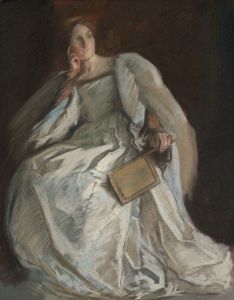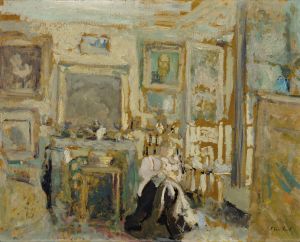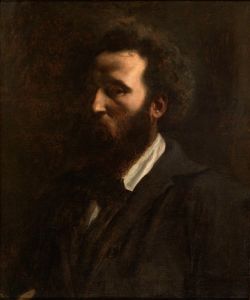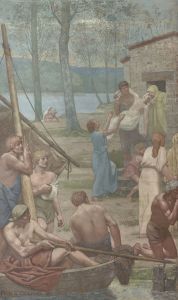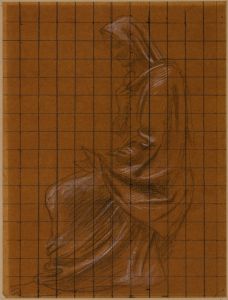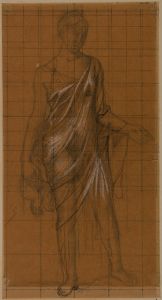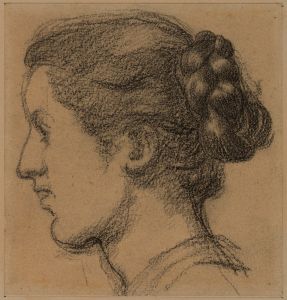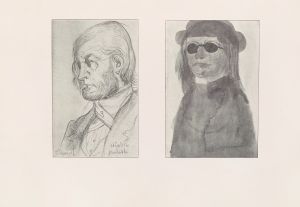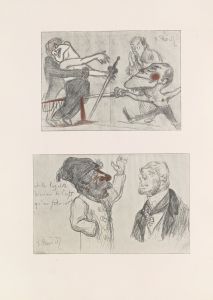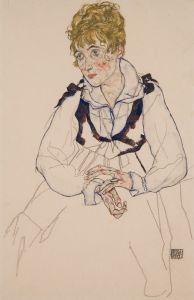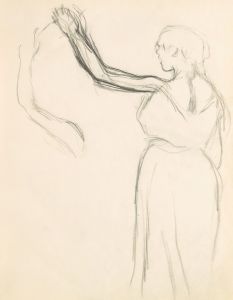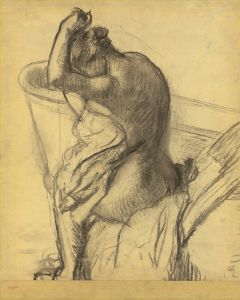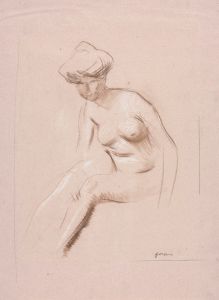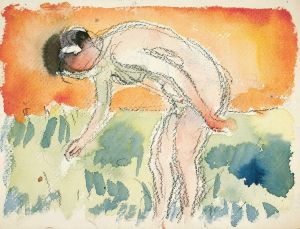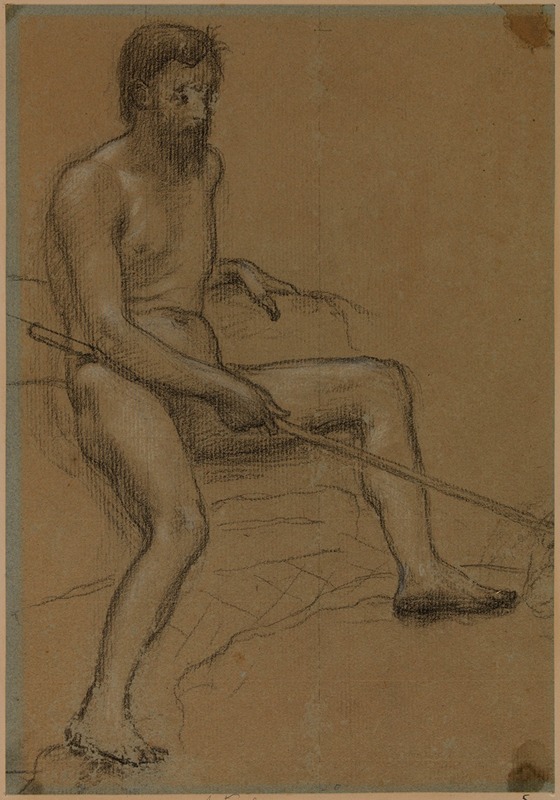
Homme nu assis, tenant un bâton dans la main droite
A hand-painted replica of Pierre Puvis de Chavannes’s masterpiece Homme nu assis, tenant un bâton dans la main droite, meticulously crafted by professional artists to capture the true essence of the original. Each piece is created with museum-quality canvas and rare mineral pigments, carefully painted by experienced artists with delicate brushstrokes and rich, layered colors to perfectly recreate the texture of the original artwork. Unlike machine-printed reproductions, this hand-painted version brings the painting to life, infused with the artist’s emotions and skill in every stroke. Whether for personal collection or home decoration, it instantly elevates the artistic atmosphere of any space.
Pierre Puvis de Chavannes was a notable French painter of the 19th century, renowned for his mural paintings and contributions to Symbolism. One of his works, "Homme nu assis, tenant un bâton dans la main droite" (translated as "Seated Nude Man Holding a Stick in His Right Hand"), reflects his distinctive style and thematic interests.
Puvis de Chavannes was born on December 14, 1824, in Lyon, France. He initially studied engineering but later turned to painting, studying under Eugène Delacroix and Thomas Couture. His work is characterized by a classical simplicity and a muted color palette, often exploring themes of antiquity, allegory, and the human condition.
"Homme nu assis, tenant un bâton dans la main droite" is a study of the human form, showcasing Puvis de Chavannes' interest in the classical nude. The painting depicts a male figure seated, holding a stick in his right hand. The composition is simple yet powerful, focusing on the anatomy and posture of the figure. The use of a stick could suggest a variety of interpretations, such as a symbol of authority, support, or a connection to the natural world, though Puvis de Chavannes often left such elements open to interpretation.
Puvis de Chavannes' work often emphasized harmony and balance, drawing inspiration from classical antiquity and the Renaissance. His approach to the human figure was not to depict it in a realistic manner but to imbue it with a sense of timelessness and universality. This is evident in "Homme nu assis, tenant un bâton dans la main droite," where the figure's pose and expression convey a sense of calm and introspection.
The artist's style was influential in the development of Symbolism, a movement that sought to express ideas and emotions through symbolic imagery and themes. Puvis de Chavannes' work was admired by many contemporary artists, including Paul Gauguin and Georges Seurat, and his influence extended to the early 20th century.
Puvis de Chavannes was also known for his large-scale murals, which adorn public buildings in France, such as the Panthéon in Paris and the Musée des Beaux-Arts in Lyon. These works often depicted allegorical and historical themes, reflecting his interest in the idealized human form and the moral and philosophical questions of his time.
While "Homme nu assis, tenant un bâton dans la main droite" may not be as widely recognized as some of his larger works, it nonetheless exemplifies Puvis de Chavannes' skill in capturing the essence of the human figure and his ability to convey complex ideas through simple compositions.
Pierre Puvis de Chavannes passed away on October 24, 1898, in Paris, leaving behind a legacy that continues to influence artists and art historians. His work remains an important part of the study of 19th-century art, bridging the gap between traditional academic painting and the emerging modernist movements.





